With the success of wild turkey restoration, you might now see these birds in your backyard. But you can also find them in much weirder locations.
It can be difficult to conceive, but in the early 1900s, the continent’s wild turkey population had been reduced to an estimated 30,000 birds. To put that in perspective, that’s a smaller number than today exists for polar bears, orangutans or African elephants.
Wild turkey restoration has been a spectacular success, with 7 million or so of the birds now found on the continent. Turkey populations were decimated by poaching. Remove that threat, and turkeys are quite adaptable. They thrive in agricultural areas and even in suburbs.
Six subspecies historically occupied a broad swath of North America from Mexico to Canada. And their range has increased. As state game agencies found success in turkey reintroduction, they also began stocking them beyond their original range. You can now find turkeys in 49 U.S. states.
But the turkey story doesn’t stop there. Their adaptability and their popularity as both livestock and gamebirds means they have been moved around. A lot.
Today, you can find wild turkeys living in some really unexpected places. Let’s take a look at the world of wild turkeys, a tour that also includes some interesting turkey lore and natural history.
-
Hawai’i
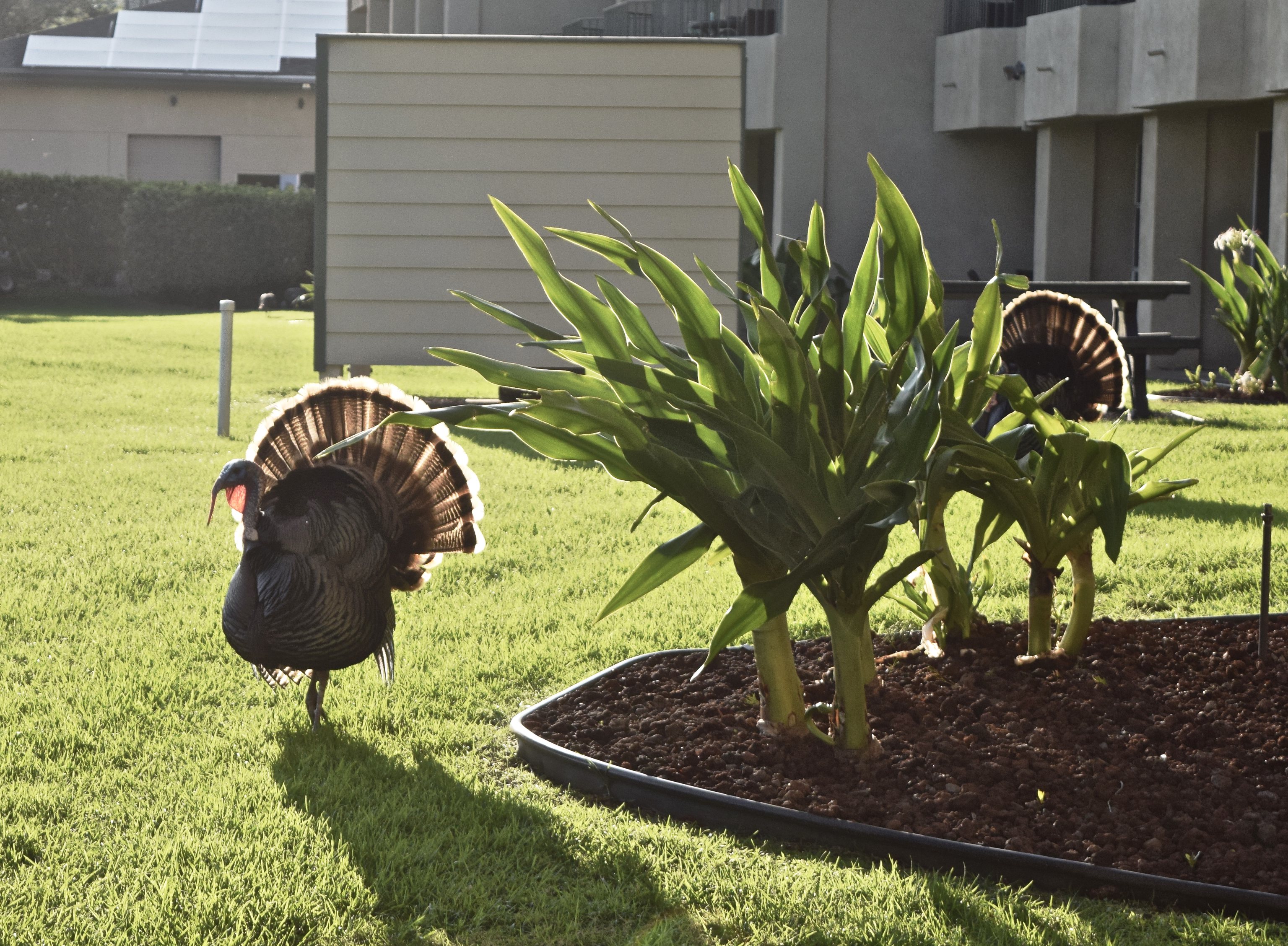
Wild turkeys strut around a condo complex on the Big Island. © Deb Nostrum / Flickr As is the case with many islands around the globe, the Hawaiian islands are particularly impacted by invasive species. This includes a long list of non-native birds that have, in some places, almost completely replaced native species.
Interestingly, the wild turkey may have been the first non-native bird to become established following European contact.
According to a paper published by the Bishop Museum, the first turkeys were brought to Hawai’i Island in 1788 from China (by that point domestic turkeys were raised widely around the globe). Some of these turkeys apparently escaped – as happened with other domestic creatures including sheep, goats, pigs and chickens – and established wild populations.
Turkeys were then introduced periodically to various Hawaiian islands from the 1800s through 1963. In the early 1900s, they were common on many of the islands, but an epidemic wiped out populations on Oahu and elsewhere.
Later introductions were for hunting purposes. Most of these turkeys were the Rio Grande subspecies native to the southern Great Plains. But as is the case for turkeys in many places, there was no real attention paid to turkey genetics during introductions.
Today, turkeys remain on Maui, Lana’I, Moloka’I and Hawai’i.
-
New Zealand

Wild turkeys in a New Zealand paddock.© Jon Sullivan / Flickr New Zealand’s predator-eradication efforts have received a lot of conservation news lately. Predator Free 2050 is a national campaign to remove the country’s non-native rats, stoats and weasels. New Zealand is also home to a wide range of other non-native species, many of them brought by British colonials for sport hunting and fishing.
The scale of “game” introductions in New Zealand is mind boggling. Species like brown trout and red deer are now the foundation of a major local and international sporting industry. There are tahr (as Asian mountain ungulate) and alpine chamois (a goat-like creature from Europe) in the mountains. Moose were even introduced, with limited success.
It isn’t surprising, then, that a large, popular game bird like the turkey can now be found clucking and gobbling in New Zealand.
The origins of these birds is a bit murky. The fact is, many species introductions around the globe are poorly documented. Many stories about the birds indicate they many originated from escaped domestic birds. The photos I’ve seen indicate they have a lot more white than usually seen in wild subspecies. I have not found any scientific studies of New Zealand turkey genetics, but it seems plausible.
Domestic turkeys from small farm flocks are occasionally reported to join wild flocks in the United States. But for the most part, domestic turkeys are poorly suited to the wild. In fact, when conservationists tried captive-bred wild birds in early reintroduction efforts, the turkeys fared poorly. Turkeys, it seems, quickly lose their survival instincts.
Why might domestic turkeys go feral in New Zealand? While New Zealand has the non-native predators previously mentioned, they’re all quite small. The country lacks the mid-sized predators like skunks, raccoons and foxes that prey on turkeys here. Without those predators, perhaps domestic birds could live just long enough to adapt to wild conditions.
-
New Caledonia
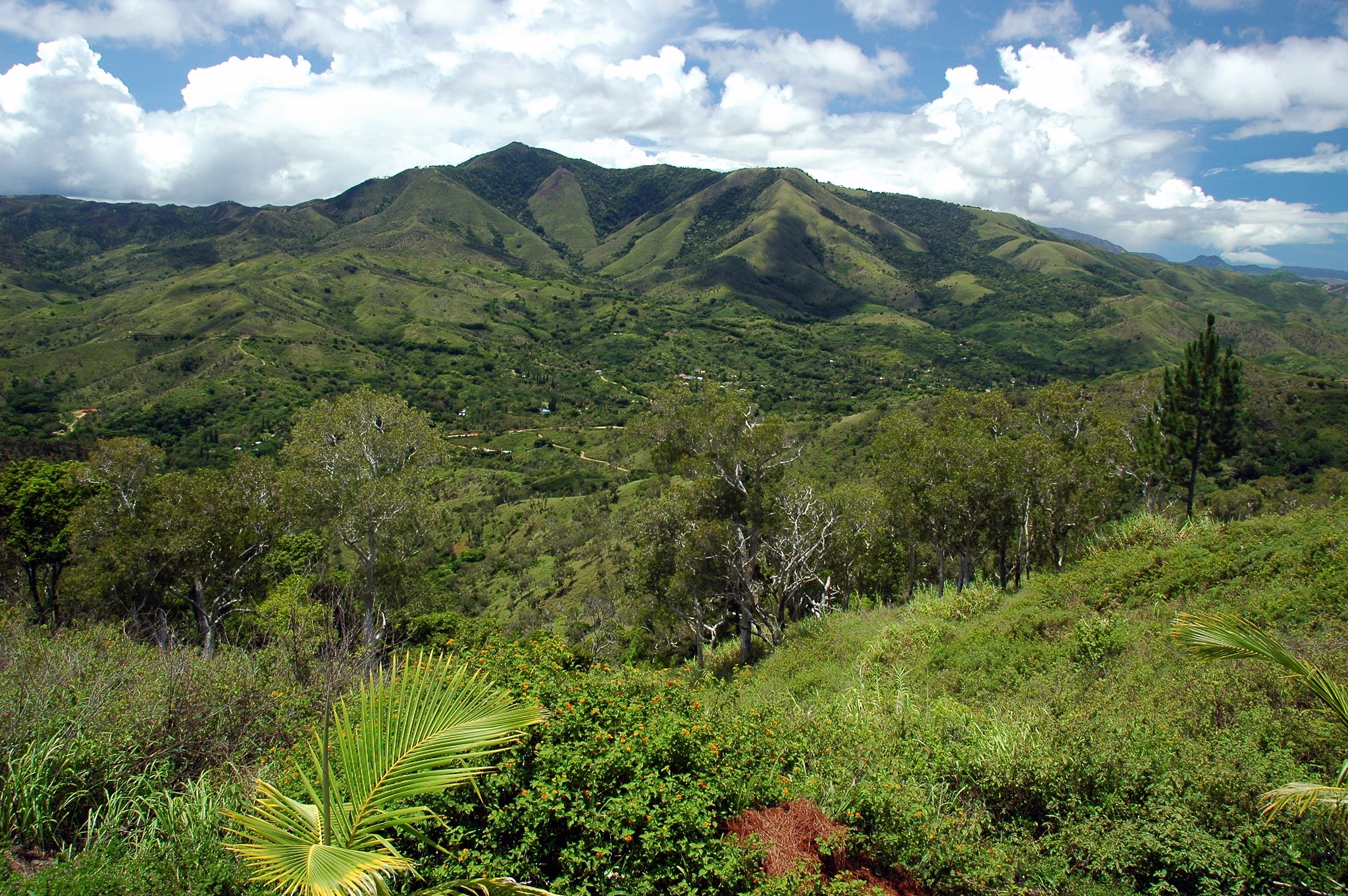
A mountain view in New Caledonia. © https://www.flickr.com/photos/saturnino/2215321382/ / Flickr New Caledonia is a French overseas territory located about 750 miles east of Australia. The archipelago, like many island ecosystems, has exceptional biodiversity. About 74 percent of the island’s 3,270 plant species are endemic. New Caledonia is also home to 6 endemic bats and 24 endemic birds.
And it’s also home to non-native turkeys. I can find very little information on the provenance of these birds, but they were likely introduced for hunting purposes. Rusa deer, a large-antlered Asiatic species, were introduced for hunting and live on New Caledonia in large herds.
I read one story that claimed New Caledonia’s turkeys are of the Gould’s subspecies. Gould’s turkeys are native to Mexico and southern Arizona. If true, this would be the only population of Gould’s turkeys outside native range. But I suspect, as is usually the case of introduced turkeys, these are a mix of subspecies.
-
Continental Europe
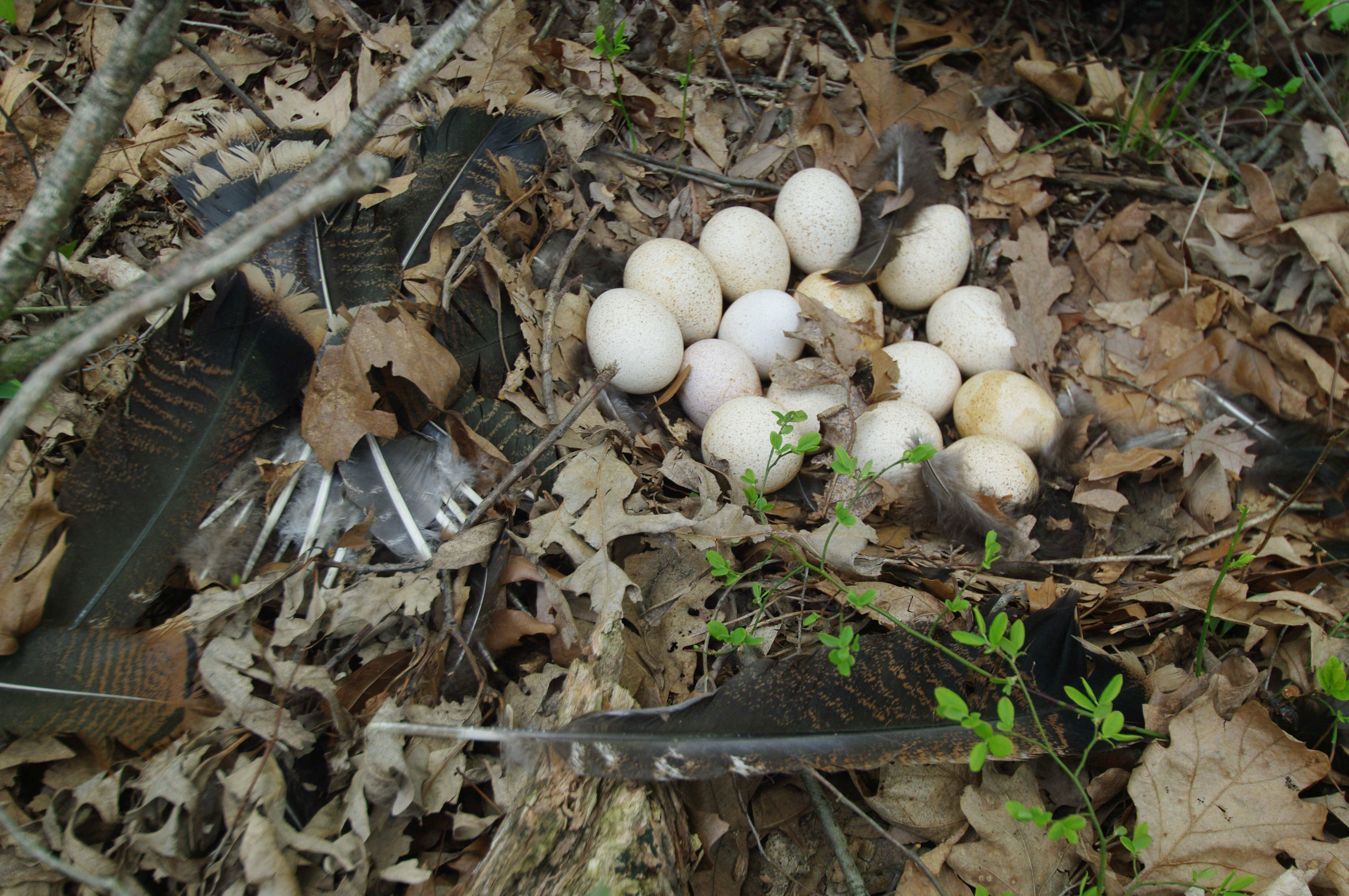
A turkey nest surrounded by turkey feathers on a forest floor. © Indiana Nature Conservancy Turkeys were brought to Europe by colonial invaders by the early 1500s. The birds quickly became trendy table fare for the wealthy, and the birds were raised around Europe. Turkey remains a popular meat, with 1.8 million tons produced in the European Union annually.
Wild turkeys have also been introduced to several European locations for hunting purposes. In Europe, stocking of game birds is usually conducted at the private estate level. As such, most populations have not become established.
However, today there are self-sustaining, wild populations found in Germany and the Czech Republic, where the birds are hunted.
-
United Kingdom
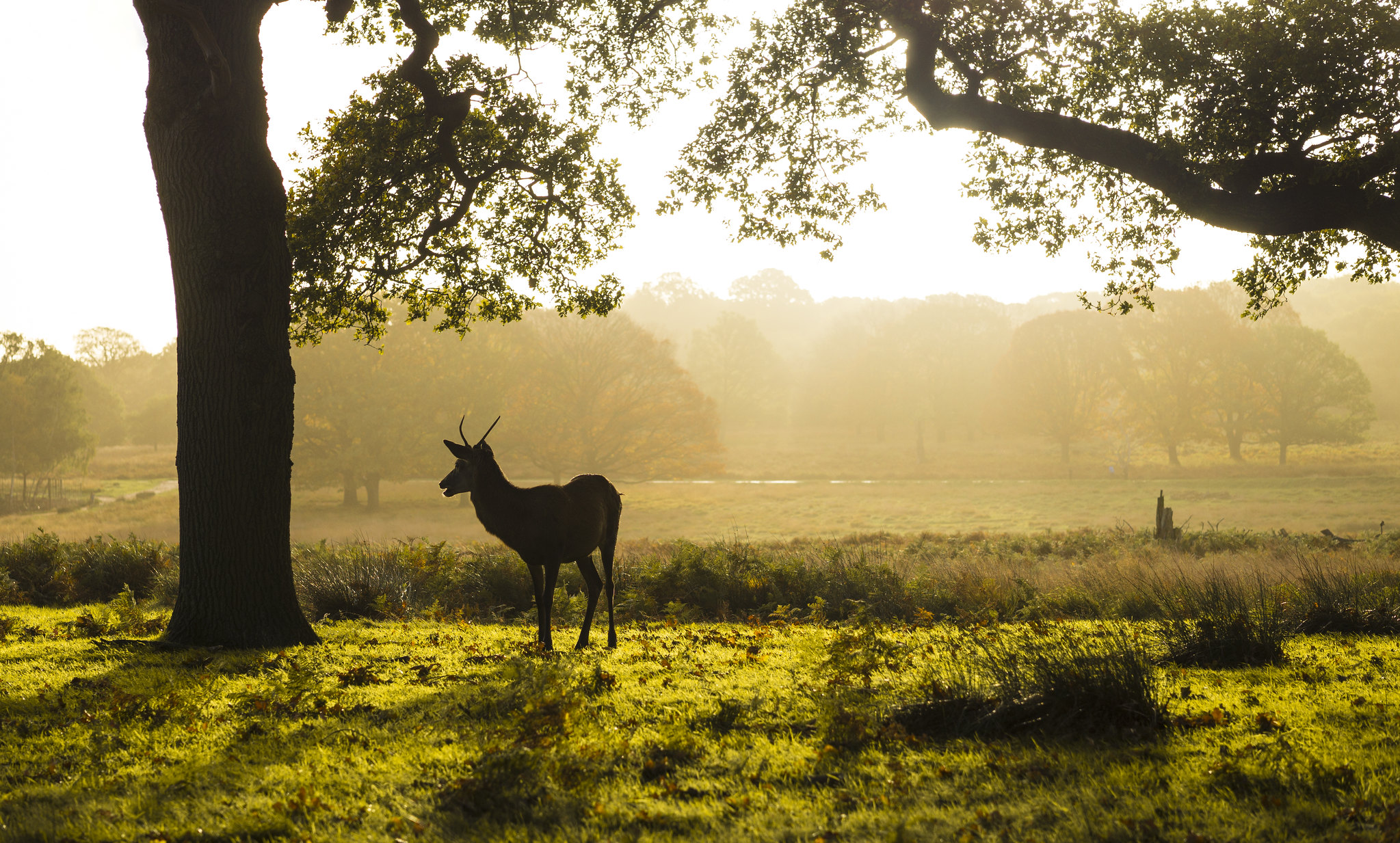
A sunrise in Richmond Park, London. © Tom Mrazek / Flickr Turkey became a popular Christmas dinner tradition in the United Kingdom by the 1700s. In 1720s, an estimated 250,000 domestic turkeys were marched in a procession from the countryside to London markets, according to the Game and Wildlife Conservation Trust.
There was also an attempt at establishing wild (or perhaps, semi-wild) turkeys as a game bird. King George III introduced several thousand to Richmond Park. However, this was a case where the introduction didn’t work out. The reason? Poachers found them easy prey.
Wild turkeys today are considered very wary birds, but sport hunting seasons are quite restrictive in seasons, bag limits and hunting methods. Unrestricted hunting – where turkeys were often targeted on their roosts – is a big reason why the birds were eliminated from many parts of North America. In England, poachers apparently found the birds to be easy pickings as well.
-
Alaska
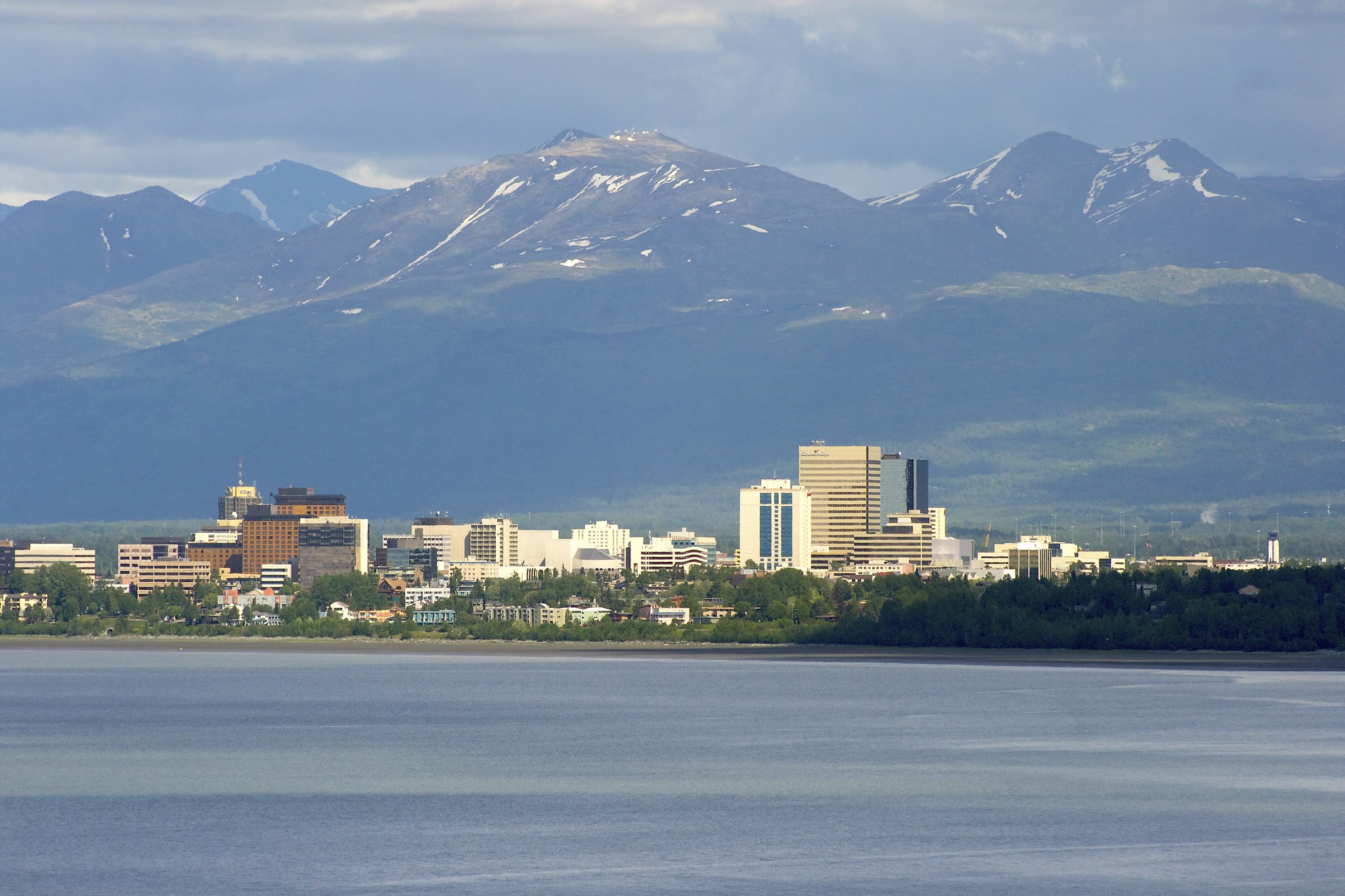
Turkeys are occasionally sighted outside of Anchorage. © Antti T. Nissinen / Flickr Historically, turkeys were found in 39 U.S. states. Now they’re found in 49. Alaska is the only state without a wild turkey population.
But Alaska does have turkey sightings. Following a previous Cool Green Science turkey story by ornithologist Joe Smith, a commenter wrote, “I dispute your claim that the only state remaining free of wild turkeys is Alaska. In 2006 in the small town of Seldovia I was literally attacked from behind by a male wild turkey. It was accompanied by a small flock of four or five (I don’t recall exact number) of other turkeys.”
The citizen science app iNaturalist lists 4 sightings (with photos) for Alaska. And other sightings are reported regularly. What gives?
The communities around Anchorage have a vibrant small farm and homesteading scene. The most likely source of these sightings would seem to be heritage turkey breeds (that resemble wild turkeys) that wandered away from home or escaped.
That’s the case with a flock of turkeys spotted regularly on the Turnagain Arm south of Anchorage. These turkeys were free-range domestic birds. Come spring, the wild turkey breeding season, these birds often ranged miles from home. A birder driving along would be surprised to see a flock of “wild” turkeys roaming near the highway.
But they weren’t wild birds. If any readers have their own Alaska turkey sightings, I’d love to hear more.
-
California
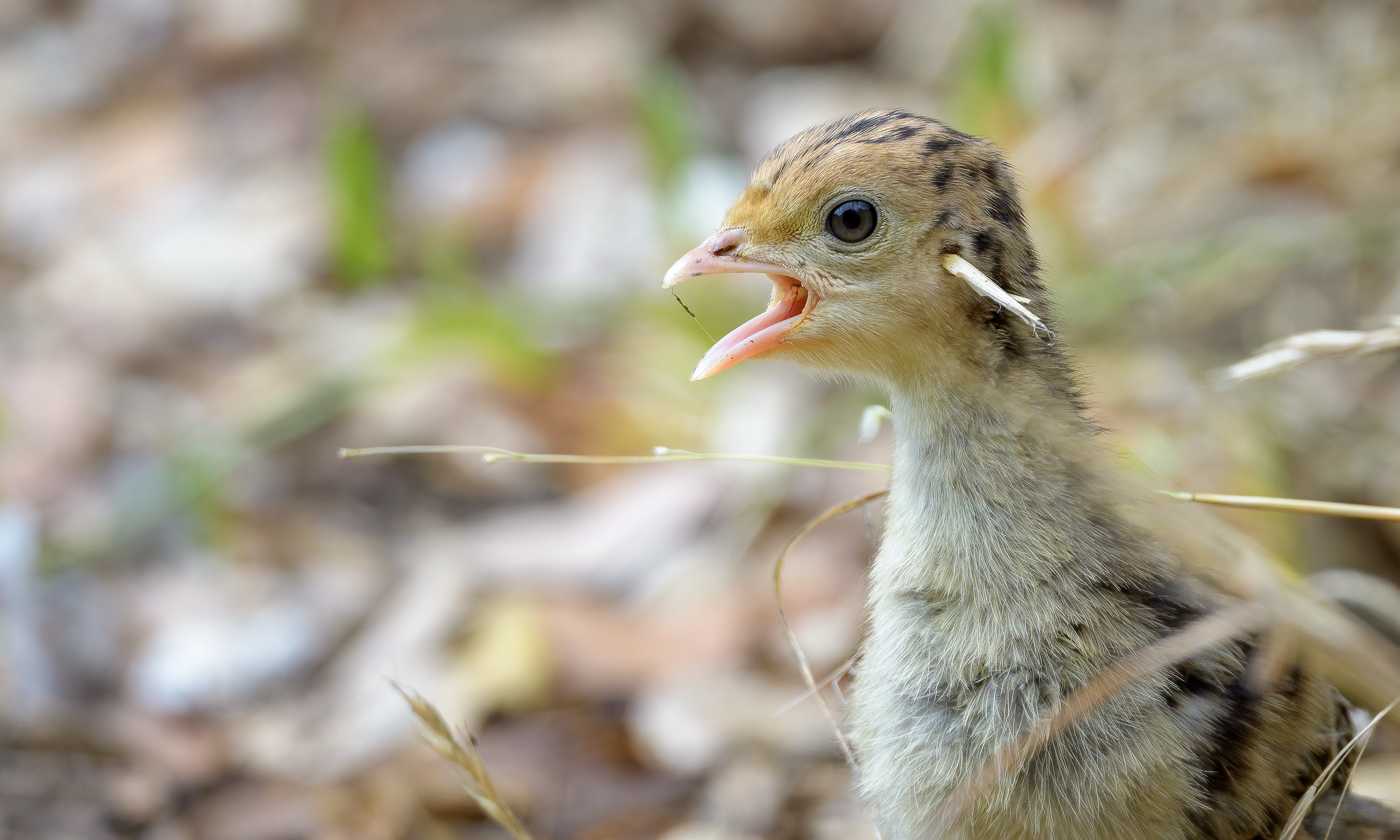
A wild turkey chick in California. © Becky Matsubara / Flickr California is one of the states that didn’t originally have wild turkeys. However, 10,000 years ago the state had a separate species of turkey, the California turkey (Meleagris californica). Fossil evidence indicates the bird was stockier than a wild turkey, but otherwise quite similar.
This bird was restricted to a small area of southern California, but apparently it was fairly common. Its bones are among the most common bird bones at the famous La Brea Tar Pits. The Tar Pits collection includes bones from 700 individual birds.
As birder and naturalist Don Robertson notes, most authorities believe the California turkey became isolated from wild turkey populations and diverged. This raises intriguing questions about the wild turkey’s range in the Pleistocene. Robertson notes archaeological turkey bone finds in Idaho and northern California, both considered outside wild turkey native range.
Wild turkeys were introduced to California by its Fish and Game Commission beginning in the early 1900s. These were farm-raised birds, and as was the case in many places, these birds lacked survival skills. As reported by Scientific American, wild birds were released from 1959 through 1999, and these prospered. Today there may be as many as 250,000 wild turkeys in California.
Is this an introduction or a reintroduction? Rewilding enthusiasts, who want to restore ecosystems to Pleistocene conditions, would consider turkeys a California native. Others consider them an invasive species with potentially harmful impacts, even though the scientific evidence is not conclusive.
This is one of those arguments that goes nowhere, as there is no right answer. The presence of wild turkeys – whether in California or New Zealand – says more about our values than it does about science. Wild turkeys were once in trouble. But now, their future seems secure – including in odd places around the globe.
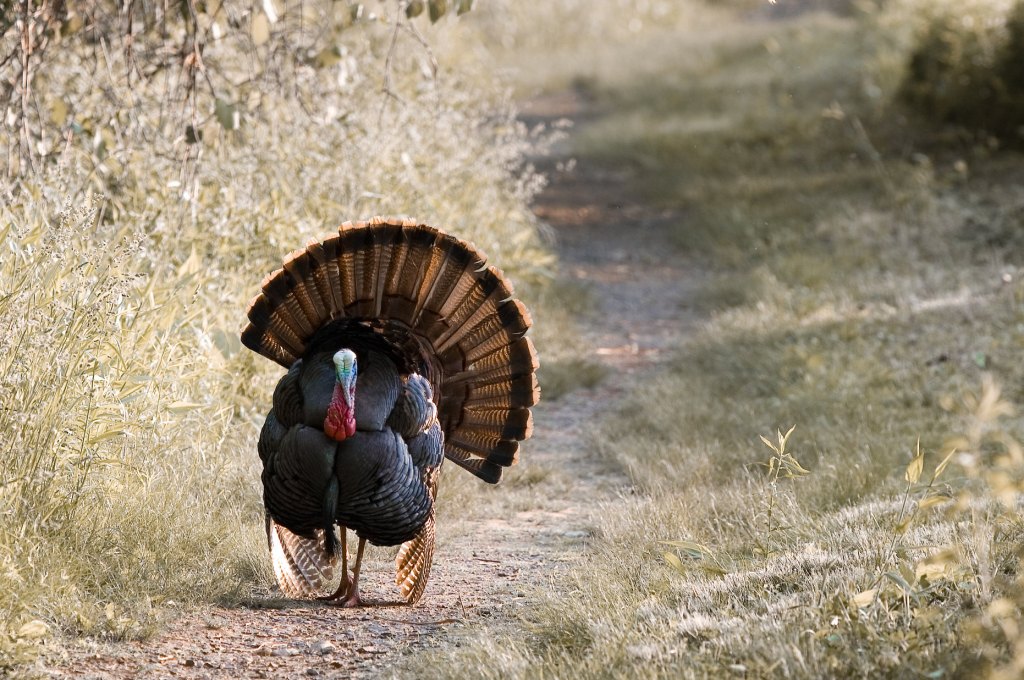



Cambodia, SE Asia… had to do a triple take as bunch wondered down the street!
I have a video from my road trip to Alaska of a turkey in the wild. I saw it in August of this year near the Russian Orthodox Church in Soldotna
Hi Matt – in the last photo what is sticking out of the chick’s ear?
Thanks – Bonnie